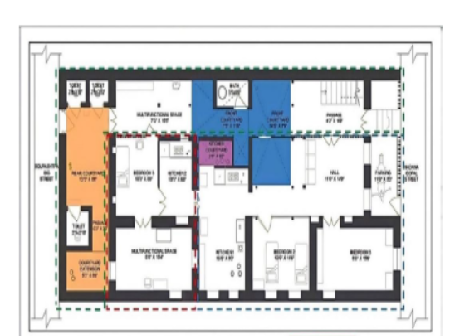


Indian Journal of Science and Technology
Year: 2024, Volume: 17, Issue: 8, Pages: 691-701
Original Article
B Vedhajanani1, Lilly Rose Amirtham2*
1Research scholar, Department of Architecture, Sathyabama Institute of science and technology, Chennai, Tamil Nadu, India
2Associate Professor, Department of Architecture, School of Planning and Architecture, Vijayawada, Andhra Pradesh, India
*Corresponding Author
Email: [email protected]
Received Date:10 December 2023, Accepted Date:22 January 2024, Published Date:14 February 2024
Background: Courtyard have been used in residential vernacular architecture for many decades. It was incorporated within the spatial design of a house for both its cultural and climatic significance. Objectives: To understand the significance of courtyard in modern-day context, this research aims to explore the behavioural, cultural, climatic and spatial characteristics of courtyard in a transformed vernacular house in Tamil Nadu. Methods: The vernacular house was documented. Unstructured interviews were conducted with the residents to understand the relationship of the courtyard and its surrounding spaces. A matrix of attributes was developed in the research. In-situ measurements were recorded in 2021 December (Winter) and 2022 May (Summer). A statistical analysis using ArcGIS software was carried out to evaluate the correlation between the attributes. Findings: Results indicated that the cultural links with climatic and spatial attributes have been either weakened or lost in a few cases after transformations. Cultural links with courtyard have been lost to a larger extent. The links between cultural attributes and spatio temporal activities have been lost in recent years. Spatio temporal activities are more linked to privacy in recent times. The relationship between courtyard and climatic attributes has been altered with the changes in spatial configuration. The links between the climatic and spatial attributes have become weak due to transformations but not lost. The courtyard is strongly linked to temperature compared to all other climatic attributes. Spatio temporal activities are more related to temperature and day lighting. These activities are associated with spatial attributes like size, enclosure and openings. Spatial attributes like enclosure and openings are more linked to courtyard. Novelty: The study establishes the relationship between the behavioural, cultural, climatic and spatial attributes of a residential courtyard.
Keywords: Courtyard, Culture, Climate, Activity pattern, Transformation
© 2024 Vedhajanani & Amirtham. This is an open-access article distributed under the terms of the Creative Commons Attribution License, which permits unrestricted use, distribution, and reproduction in any medium, provided the original author and source are credited. Published By Indian Society for Education and Environment (iSee)
Subscribe now for latest articles and news.